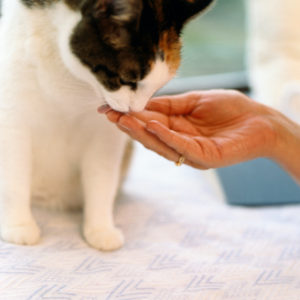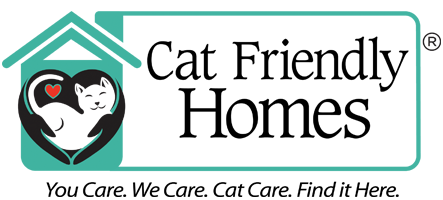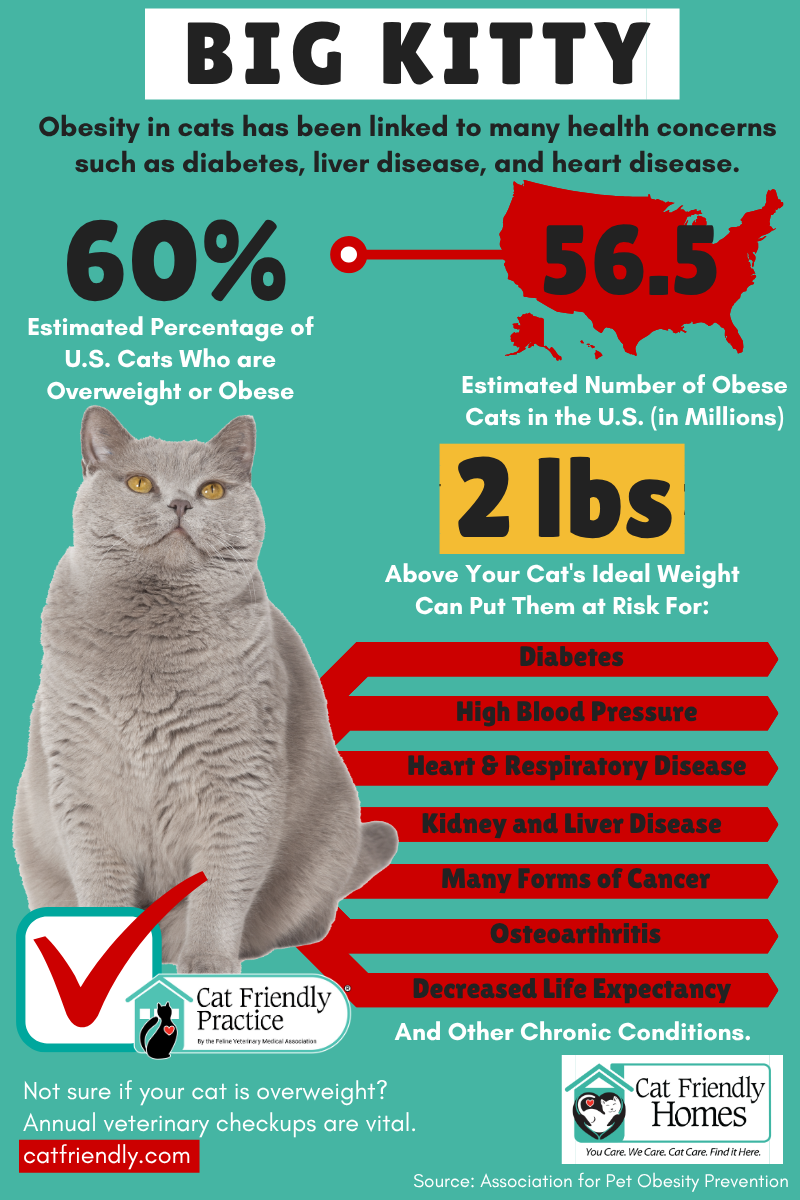Is your cat overweight? Do you know what a healthy body weight is for your cat?
The images of the fat cats made popular in comic strips and internet memes has changed people’s ideas of a cat’s ideal or normal body weight. It’s quite possible that your feline friend is carrying around a little (or a lot) of extra weight. Your veterinarian can help you figure out a healthy weight for your cat.
Obesity-Related Health Concerns
Did you know that when cats are at an ideal body weight, on average, they live longer lives? Not only that, but they tend to feel better too! Obesity in cats has been linked to many health concerns such as diabetes, liver disease, and heart disease, to name just a few. Fat cells can release pro-inflammatory mediators into the bloodstream which predisposes cats to inflammation. This can increase many conditions such as inflammatory bowel disease and asthma – two very common cat diseases. As cats age, arthritis or degenerative joint disease (DJD), often becomes an issue. Cats tend to develop arthritis in the joints of their limbs and spine, which is made worse by extra weight on these joints.
Diagnosis and Treatment of Obesity
If you are concerned about your cat’s weight, now is the time to take action. Start your cat on their way to a healthier and happier life. Involve your veterinarian to make sure your cat loses weight in a safe and healthy manner. Together you can design a program with weight loss goals, make sure the weight is coming off at an appropriate rate, and ensure that all of your kitty’s nutritional requirements are being met.
Diet
During your veterinary visit, discuss the type and amount of food your cat is eating. Be sure to tell your veterinarian about all the treats your cat receives. Don’t forget those little crumbs from your dinner plate counts, too. There are many different types of foods that can create a healthier diet for your cat, including special prescription diets. You and your veterinarian can discuss and figure out which works best for you both. In multiple cat households, often one cat steals food from the other cats. This makes it difficult for you to regulate what your cat eats. Different strategies can be used such as controlled meal feeding in separate areas, or putting food where only one cat can access it. There are even devices you can buy that only allow a specified cat to access the food based on an I.D. collar or microchip! Discuss the specifics of your situation during your veterinary visit to come up with creative solutions for your home.

Treats & Rewards
It can be hard not to treat your feline friend with lots of food and treats. However, food is only one of the ways that you can spoil them. You can reward your cat with catnip, play, or just plain-old loving attention. Puzzle feeders can also be a great way to slow down eating and provide activity and stimulation.
Exercise
Just as with people, daily activity is an important part of your cats’ weight loss plan. Indoor cats are particularly prone to inactivity. With a small amount of effort on your part, your cat can start to get more exercise which comes with the added bonus of being more mentally stimulated as well! Read the AAFP’s “Your Cat’s Environmental Needs” brochure for cat caregivers, to learn how to set up an engaging environment for your cat to meet their physical and emotional needs.
Contributed by Dr. Robert Schmitt, DVM


